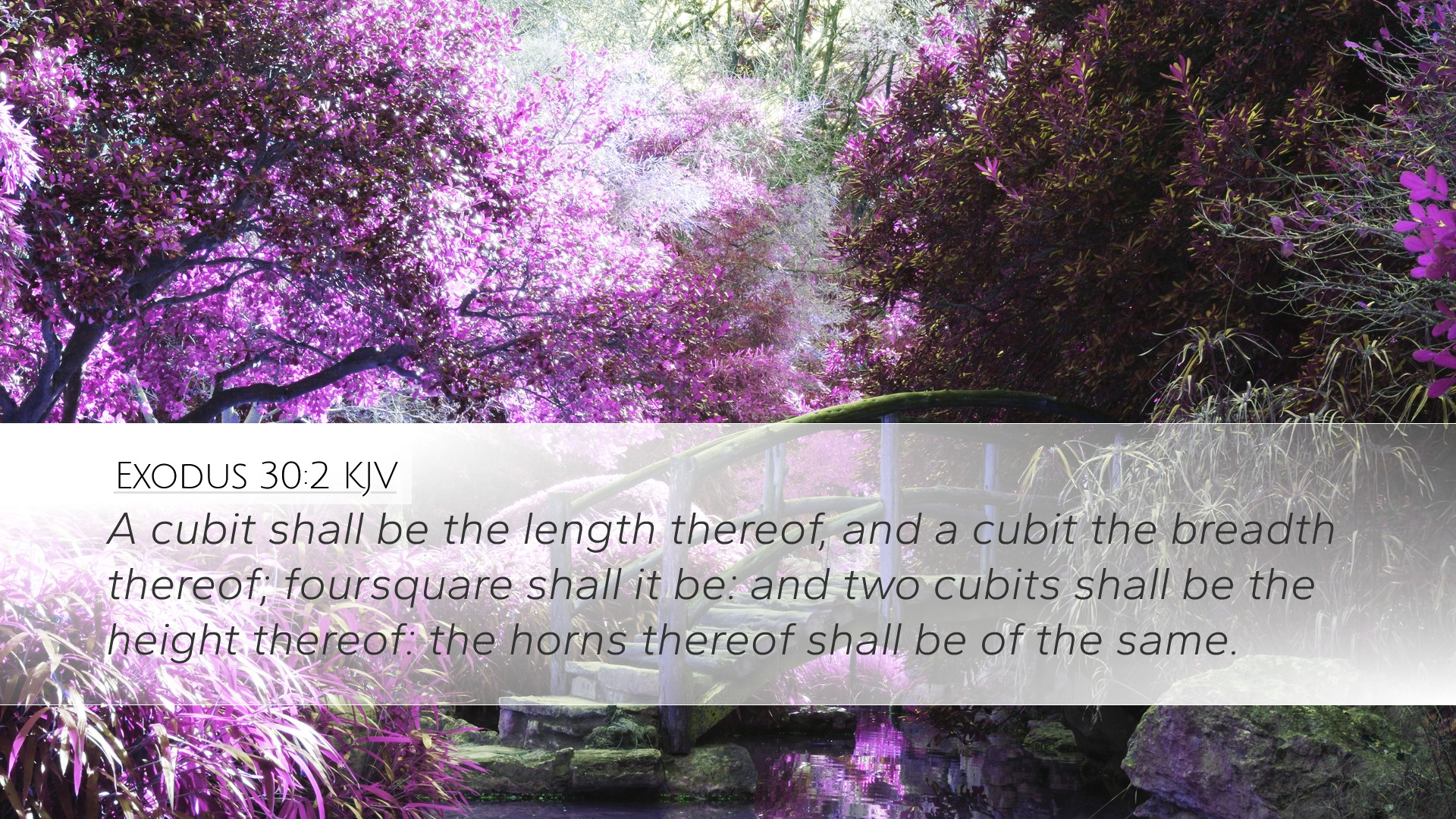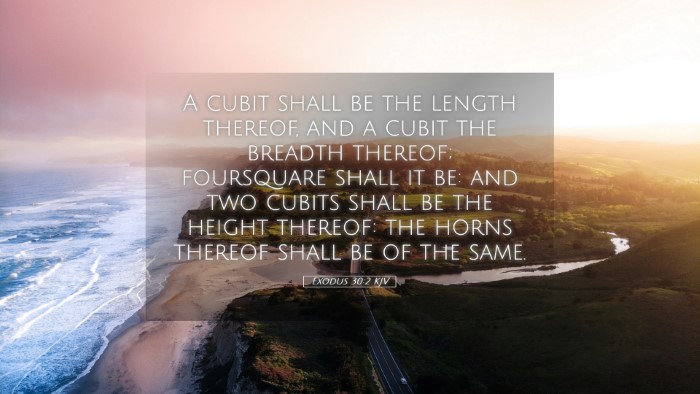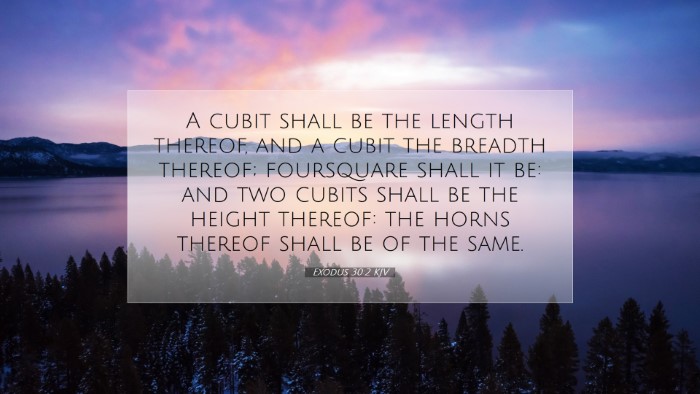Commentary on Exodus 30:2
Exodus 30:2 states, "A cubit shall be its length and a cubit its breadth; it shall be square and two cubits shall be its height. Its horns shall be of one piece with it." This verse is part of God's instructions to Moses regarding the construction of the altar for the burnt offerings, known as the Altar of Incense. Here we will collectively provide insights from notable public domain commentaries including those by Matthew Henry, Albert Barnes, and Adam Clarke to enrich our understanding of this passage.
1. Dimensions and Design
Matthew Henry emphasizes the significance of the specific measurements given. He notes that the altar’s dimensions—one cubit in length, breadth, and two cubits in height—reflect not only practicality for worship but also symbolic meaning in its design. A cubit is roughly 18 inches, leading to a compact structure meant for direct access within the Holy Place to signify constant prayer.
Albert Barnes elaborates on the geometric proportions, indicating that the square base symbolizes stability and balance in worship practices. The uniformity in dimensions signifies that worship is to be centered and focused, without distraction from the altar of incense—an item of great importance established within the sacred space.
2. The Importance of the Horns
Both Henry and Barnes draw attention to the mention of the horns, which are intricately tied to the function and symbolism of the altar. According to Adam Clarke, the horns are essential because they represent power and protection. Clarke explains that in ancient practices, blood was often placed on the horns to signify atonement, and thus they emphasize the sacrificial nature of approaching God. They further indicate the linking of the altar to the concept of refuge in God’s presence.
Matthew Henry adds that the horns also represent the strength of prayer ascending to God. He highlights how prayers of the faithful rise as incense, invoking God’s mercy and supplication for the community. This aligns with the role of the altar not just as a physical object but as a vessel for intercession between God and His people.
3. Worship and Divine Instructions
In understanding the significance of the altar, Albert Barnes posits that this divine instruction carries the weight of God’s sovereignty over worship practices. The precise directions given to Moses indicate that worship is not arbitrary but is to be carried out according to divine stipulation. This serves as a reminder for present-day worshippers that reverence in worship is paramount.
Clarke's insights further elaborate on how such specifications serve to establish a relationship between human actions and divine presence. The altar’s design emphasizes that while God desires relationship and communication, there is a proper way—set forth in the Law—through which that can be rightly expressed.
4. Symbolism of the Altar
The altar holds deeper meanings beyond mere construction. Matthew Henry reflects on how this altar foreshadows the ultimate sacrifice of Christ. The measurements and the aspect of horns resonate with the life of Christ who is both the sacrificial Lamb and the High Priest, engaging directly with themes of redemption and reconciliation. As the altar prepares the way for offerings and gifts to God, so does Christ as the mediator between God and humanity.
The symbolism continues with the altar as a point of connection to God’s covenant with Israel. According to Barnes, the altar serves as a continual reminder of the Israelites' identity and relationship with God. This monument of faithfulness is both a literal and spiritual design reminding them of divine grace and mercy extended to them, which still has profound implications for today’s believers.
5. Practical Application for Today’s Believers
In conclusion, reflecting on Exodus 30:2, readers are encouraged to recognize the significance of structured worship and relationship with God. Henry, Barnes, and Clarke collectively underscore that the altar is not simply an ancient construct but a living representation of spiritual principles applicable in today's context.
- The importance of prayer: Just as incense represents the prayers of the people, believers are called to maintain a continual prayer life, recognizing their dependence on God.
- Approach with reverence: Worship should be approached with a heart aligned with God’s will, emphasizing the sanctity of divine instructions.
- Symbolism of Christ: Understanding the altar as pointing to Christ enriches the believer's faith, emphasizing the significance of Jesus as both our High Priest and sacrifice.
- Community Representation: As the altar served the people, worship and prayer should encompass community intercession, reflecting the body of Christ in petition.
In reflecting on the depth of Exodus 30:2, may pastors, students, theologians, and all who engage with these commentaries find renewed understanding of their personal and communal worship with God.


